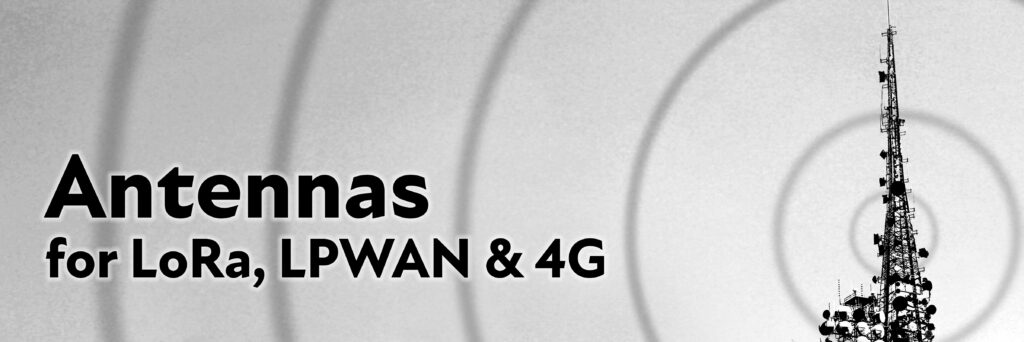
Real world antenna considerations for LoRa, LPWAN and 4G
The last part of an RF-based design is commonly considered to be the antenna. In a remote design where optimal connectivity, low power performance and long battery life is paramount, the antenna decision should, in fact, be a priority as one of the first decisions. Antennas come in a wide range of shapes and sizes; the selection decision will likely influence the shape, size and the material used for the finished product enclosure.
Placement
Antenna placement is key especially for integrated (internal) antennas where there is limited space, and/or shielding from metal objects such as batteries, RF shielding cans, the PCB, mounting brackets and LCD displays. Essentially, with anything metallic, you have to carefully ensure that the antenna has a good view of the sky. In most cases, the optimal position for the antenna is either mounted on the top of the design inside or outside the enclosure. Many designers opt for the internal antennas as they are more aesthetically pleasing but this actually helps mitigate the problem of them being unscrewed or potentially damaged. That said, an externally mounted antenna will generally give better performance, however this usually comes down to the type or style of product being designed.
If you decide to use an internal antenna, you have two options: on PCB or off PCB. When considering this, the following areas need to be addressed:
For trace-on-board antennas, performance may be compromised; you need to ensure the PCB material is stable over temperature and humidity as this will change the RF performance. With respect to the chip-on-board antennas, they may need to be placed with a track along the long edge of the PCB to enable it to be tuned for best performance. For these reasons, many designers opt for the PCB patch antenna with micro coax feeders that are generally connected using U.FL style RF connectors.
The quality of the micro coax is vital; low quality micro coax cables may have a screen without a tight weave, which can cause the transmission to leak over the design, thus, causing instability. The higher the transmission power, the worser the effect. In addition to this, it’s good practice to route the micro coax around the internal corners of the enclosure and hold it in place with a drip of silicon or mould a pin into the housing to guarantee its route. We have seen many designs where MCU’s go into reset during transmit, due to poor quality coax and/or wrong placement of the coax.
It is critical to avoid detuning the antenna at the required frequencies as it can inadvertently change its performance. To ensure best performance, the RF module – regardless of band – must have a good 50 Ohm RF match as close to 1:1 as possible. However, sometimes this isn’t achievable because of the materials used in the enclosure or external mounting brackets etc. Therefore, it’s good practice placing the component spaces/layout for a Pi filter as close to the RF Module as you can, between the Module and RF connector. This fitted with a zero Ohm link to begin with, enables inductors and capacitors to be placed in the future to tune-up the antenna, to achieve optimal performance.
Testing
Sometimes, to only test that the design works on the bench just isn’t enough. Range/field testing in ‘real world’ style installations should be done to ensure you have good range margins. Testing in the field taking into account the signal attenuation caused by rain, fog, wet trees, buildings, vehicles etc. will ensure the design performs well without a hitch when deployed.
Long Range
Having an antenna with the best RF performance isn’t just a matter of good design practice – it can drastically improve the communication range and battery life. If the VSWR is off (antenna mismatched), you are burning more power than you need to during the transmit event and the received signal level is lower, hence requiring more current through the receiver stage. LoRa and LPWAN is predominantly about long range, low-power communications, so battery life and operational life in the field without the need for a truck-roll to change battery is the holy grail.
Contact Us for Any Advice
Solid State Supplies have a wide range of services assisting customers in antenna selection, placement and tuning. Our advice is free, so please contact us if you need any help.
We have a comprehensive range of antenna solutions supporting all types of wireless technologies including LoRa. Below is a selection of LoRa antennas to help support your design. If you have any questions, need support or advice, Solid State Supplies is here to service your technical and commercial requirements.
Written by Richard Bethell, Technical Director at Solid State Supplies
Contact Us For More Information
Recommended Antennas:
Style PCB Mounting Embedded Antennas
Antenova
2J
